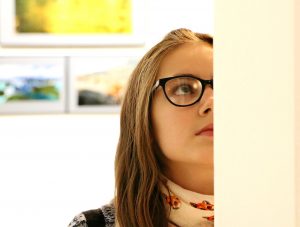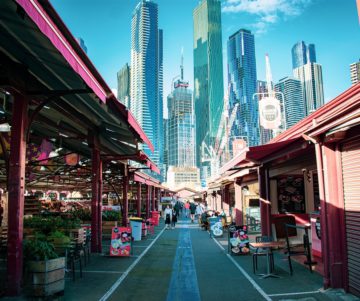
Art In Interior Design
bianca | October 30, 2018 | 0 | My BlogAs an interior designer, I enjoy creating rooms which are visually convincing, some of these with a border, a few of them a little more conventional, the majority of the colorful (possibly a great deal or using a fantastic number of accents), however all of them use some kind of contemporary artwork (roughly anything generated between 1947 and now).
Contemporary art is the art of our current society and the artwork which reflects that we are individually and as a society. It contrasts the eye and your brain and can open windows and doors to areas as distant as Kyoto or as near as Brooklyn. It shouldn’t be hard to live with this engaging and intriguing type of saying, and however, as an interior designer and also a collector myself, I find that not enough men and women are enjoying the chance to have artworks in their lives.
It is my mission to demystify the world of modern art and interior layout and wed them both in a means that’s attainable (and irresistible).
The Way to Purchase Art
The contemporary art market is only humongous. Historically, people are overwhelmed and scared by the notion of purchasing art for many different factors. People today associate the term “art” with what is in museums and also have pigeonholed the entire notion as overly highbrow. And of course that in the previous 10 to 15 decades, the auction houses have openly reported astronomical amounts whenever they shut a modern art auction, thus a lot of individuals believe those are the typical rates. In the end, there’s the misconception that galleries are impenetrable from the typical person or from people that aren’t wealthy. All of these are myths which are simply false.
1. Get an art instruction…
The ideal location to begin buying artwork, to acquire a fantastic base and instruction, and create an understanding for the reason you fall in love with particular artworks, are certainly the regional galleries, specifically those which have a program for artists and reflect them exclusively within their town.
If you’re not certain of your preferences and preferences, art fairs are also a superb source to find a good deal of contemporary artwork, have a crash course in artwork, and also do some cost study. They’ve proliferated so much that there appears to be a brand new one in each corner of the planet. They are usually crowded, non-judgmental areas where people are able to navigate easily without being intimidated from the vacant halls and chambers of a gallery.
The mother of all of the art fairs is Art Basel in Switzerland, followed by her younger sister, that the Miami Beach model. The galleries are top-notch, the criteria to be eligible for an exhibitor is amongst best, and frankly, it could be a great deal of fun and everyone who attends can navigate and hang out for hours (or days like I do) and locate old and new artworks in all kinds of price ranges and from all around the world. Frieze, Scope, Pulse, Red Dot along with the Cheap Art Fair will also be excellent fairs that occur through the entire year in different cities like NYC, London, Berlin, Singapore, and Miami.
2. Know your preferences…
People prepared to begin purchasing and living with artwork usually know their particular tastes: Can it be photography with the boldness and neatness it conveys? Is it the puzzle of owning an abstract bit entirely open to a million interpretations? Could it be artwork using a political context? Or what if somebody gravitates again and toward glowing pop-style neon(s)? Just like the interior design of a home, the artwork inside a house tells a lot about the personality of the homeowner.
3. Do your research …
To your very first purchase, stick to everything you love and do not only make a random buy; get adequate info regarding the artist and the gallery.
- Has the artist won prizes?
- Been encouraged to biennials?
- Represented with a high notch gallery?
- Pay attention to learn just as much as possible before committing to your bit.
Note: Prevent auction homes (at least when it is your first time)
For those that are only getting their feet wet, auction houses aren’t great places to purchase art. To begin with, buyers need to pay premiums. The adrenaline rush which may come together with needing to acquire will induce one to cover more than you are able to spend. Most of all, the instruction you receive from purchasing art through galleries or through the booklets that come with the art crates are really invaluable.
There are three other significant factors to think about when beginning a set (and do not be fooled by the term group, as anyone with over 1 piece of art has started a set):
- Pay attention to the artist’s career: Clearly emerging artists (not always young but normally at the first five decades of their livelihood) possess artworks with price points which are lower than individuals that are mid-career or established.
- Think about the moderate: Prints, variants, and photography are somewhat more reachable than originals. There are instances, by way of instance, where mid-career or recognized artists who usually operate with acrylic or oil or mixed media on canvas opt to launch a limited edition of prints which are a portion of what the originals could price. I really like photography and prints and urge them to a great deal to my customers since it’s possible to get big, picture functions without breaking the bank. Most of these prints and photography work are especially easy to fit into the trendiest spaces. Coastal furniture and cactus print or photos are popular examples of an interior-art combination for any space.
- Notice: Whenever you can, purchase limited editions instead of open variants.
- Size is essential! From the sphere of modern artwork, bigger is generally better. I’ll always favor purchasing a bigger bit due to the effect it can create, turning an area from blah to wow!

The Way to frame and screen
Styling tips:
“Generally speaking, if you get art from a gallery, then it is ideal to follow their mounting or framing hints that are typically also the artists’ fantasies for a specific piece.
Living room
As a guideline…
- Stretched canvases do not require a framework.
- Super edgy or super big photography seems best mounted in acrylic or Plexiglas.
- The larger the bit is, the closer it should be on the furniture that’s accompanying or improving (a couch, a games console …). Separation in the furniture can vary from four to six inches. (But each situation differs, particularly in case the item is too large or if the space has high ceilings)
- The notion is that the bit needs to be at eye level and not overly high over whatever functions as a point of reference.
Bathrooms & Kitchen
In the bathroom to the kitchen, anything else goes. I really don’t feel there is an area which is not matched for contemporary artwork. In reality, I really like to try bold combinations and integrate art in unexpected places. It is a cure that delights both owners and their guests.
Bedroom
I move somewhat more subdued in the bedroom since I subscribe to the concept that bedrooms ought to be relaxed sanctuaries.
- Dark and white or sepia photography, watercolors, and mixed media works that include some pastels and softer colors are generally a fantastic bet.
- Bedrooms will also be the location for smaller bits. You do not require the effects of larger works. Also, try beach style homewares to further bring in that resort look
- Hallway
I enjoy producing galleries with a lot of little pieces which have mismatched frames and fashions. Actually, I think that it’s the only time in which lots of mismatched frames and styles work well. Hallways are fantastic for this sort of screen.
I invite people to have artwork in many different media that could vary from oil wood to photography to sculpture. But, I also imply that there needs to be a cohesive theme joining the artwork together, either a particular period of time once the artworks were made or functions that appeal to the exact same movement even if they’re from various artists or functions coming from musicians from a particular area like Latin America.
To produce your very own museum display…
Start by building a pattern; Require a roll of paper that the size of this wall (or glue paper panels collectively ) that’s to develop into a gallery then place it on the ground.
- Position the mismatched works in addition to the paper how you want them organized on the wall.
- That is your opportunity to rearrange and experimentation with the functions until they look just perfect.
- Use a pen to indicate exactly where each ought to proceed.
- Tape the newspaper onto the wall and then put nails in the areas at which you would like each piece to hang.
- Carefully tear the paper off the wall and also voilà, there is the gallery”







